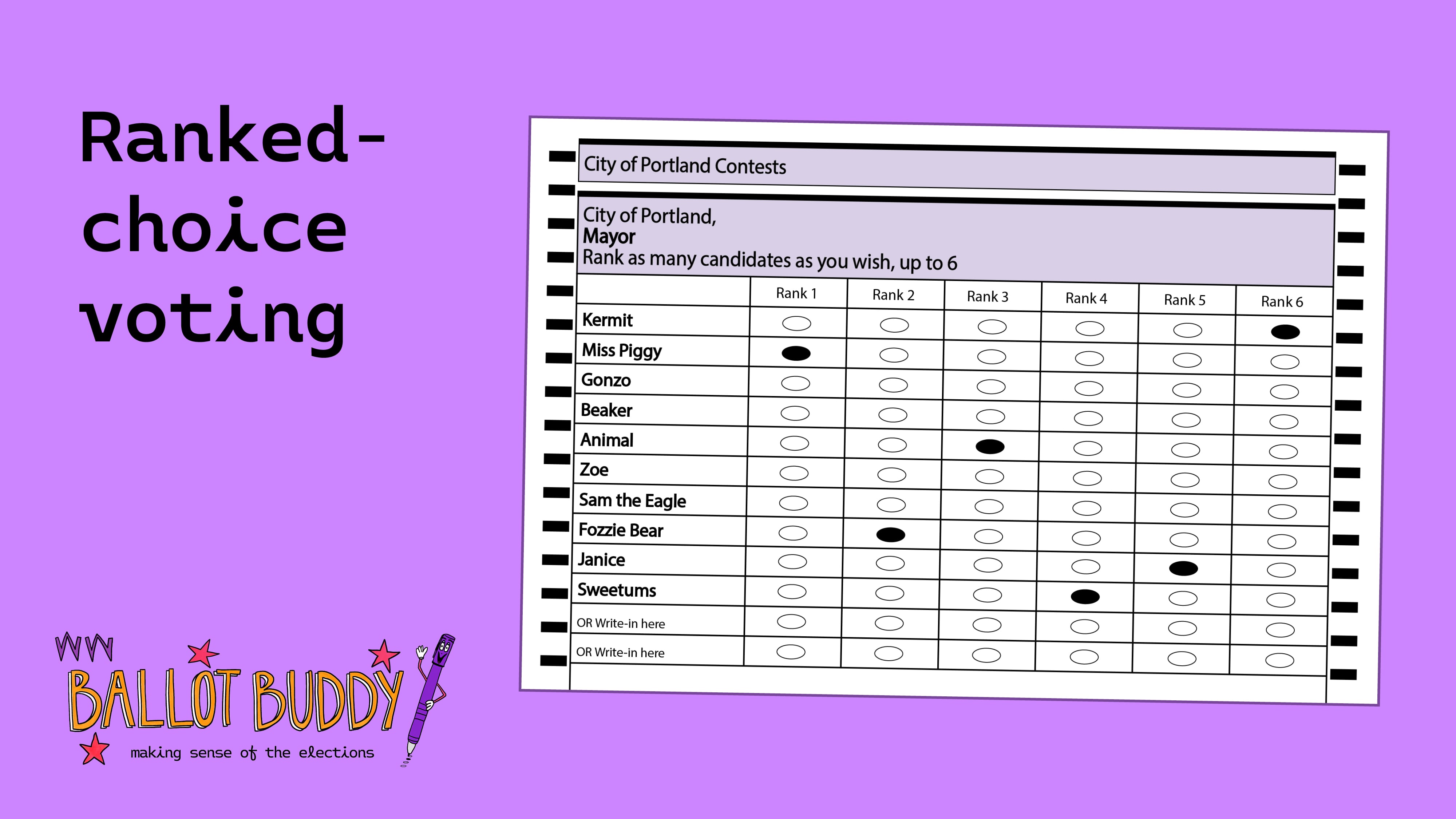Portland voters have a big, new job coming in November.
First, we must choose 12 City Council members, up from four, the number since 1913. Second, we will choose them through ranked-choice voting. Third, we have to get comfortable with the idea that three candidates will win a seat in each of four districts and more than 25% of the vote is enough to secure one of the three seats in, say, District 1 (East Portland).
The big idea behind ranked-choice voting is that it captures more “voter sentiment.” If your vote were an orange, regular voting systems would squish it once and take whatever juice came out. Ranked-choice voting puts the orange in a fancy juicer and tries to get every last drop.
New things are scary. Three new things all at once can be terrifying. We’re going to take them in chunks over the coming months so that by the end you’ll know why the Gregory Method for counting surplus votes in a multimember district is the best practice. But a journey of a thousand miles starts with a single step. Let’s start here.
I hear there won’t be a primary. Is that right?
Yes. There will be no primary. With ranked-choice voting, it all happens at once. That’s why you didn’t see City Council, mayoral, or auditor races on the May ballot.
How many candidates can I vote for?
You may choose up to six, like ordering half a dozen doughnuts at Sesame, ranking them in order of preference.
How do I indicate whom I like best?
Take a look at the mock ballot below. Looks like a damn spreadsheet, right? You’ll see a list of candidates down the left side of a grid and preferences across the top (Rank 1, Rank 2, Rank 3…). If you live in District 3 (Southeast Portland) and love former Commissioner Steve Novick, you would fill in the bubble marked “Rank 1″ on the line by his name. If you really, really like—but don’t love—Rex Burkholder, founder of the Bicycle Transportation Alliance, you might fill in the “Rank 2″ bubble by his name. And so on.
So now I have to know all about six candidates, not just two or three?
Ideally, yes. Democracy works best when citizens are informed, and as we’ll see in coming weeks, ranked-choice voting in multimember districts means that the Rank 6 oval you fill in could determine who’s going to represent you, as improbable as that may seem.
Can I just choose one candidate in a race?
Absolutely, but you’re robbing yourself of the extra democracy that ranked-choice voting promises. If you live in District 4 (westside), you could bet it all on Stan Penkin, president of the Pearl District Neighborhood Association, fill in one oval, and turn on Netflix. If Penkin loses, your ballot is out, and none of your preference for another candidate was expressed. But if you choose Portland cop Eli Arnold as your second choice, that vote will go to him, and Arnold might just win. Or your third choice might. Or your fourth. As they say in the lottery, you can’t win if you don’t play, and the more numbers you pick, the better.
What if I screw up my ballot and select two candidates as Rank 1 or something like that?
Multnomah County is ready for this. If you choose two people as your first choice or, God forbid, three, tabulating machines will toss all of them out and make your Rank 2 your first choice. Not the best result in the world, but your preference is still expressed. The same is true for other mistakes. The new juicer is designed to get some juice no matter how misshapen the orange.
Have questions about your ranked-choice ballot? Send them to ballotbuddy@wweek.com.
